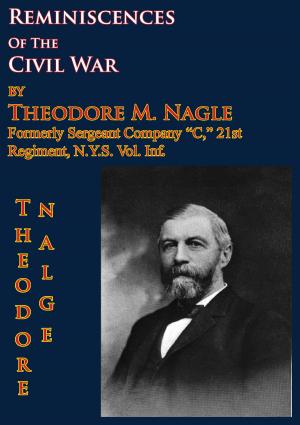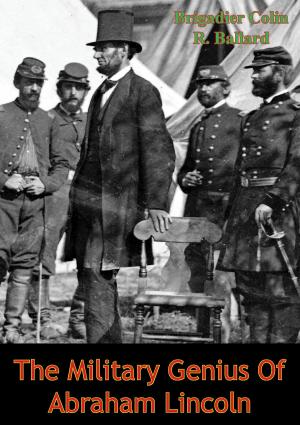Comparative Evaluation Of British And American Strategy In The Southern Campaign Of 1780-1781
Nonfiction, History, Military, Weapons, United States| Author: | Major Joel Woodward | ISBN: | 9781782896555 |
| Publisher: | Golden Springs Publishing | Publication: | August 15, 2014 |
| Imprint: | Golden Springs Publishing | Language: | English |
| Author: | Major Joel Woodward |
| ISBN: | 9781782896555 |
| Publisher: | Golden Springs Publishing |
| Publication: | August 15, 2014 |
| Imprint: | Golden Springs Publishing |
| Language: | English |
This thesis is an analysis and evaluation of the British and American campaign strategies in the Southern Campaign of the War for American Independence. After over four and one-half years of inconclusive fighting in America, the British government developed a plan to restore Royal control of the American South where large numbers of Loyalist Americans were expected to rally in support of the Crown. Control of the southern provinces would allow the British army to isolate the North where the rebellion was strongest. In May 1780, the American army of the South surrendered to a British army at Charlestowne, South Carolina. The Americans raised a new army in the South, but it too was decisively defeated at Camden, South Carolina, in August 1780. American prospects in the Southern Department appeared bleak until the arrival of Nathanael Greene in December 1780. Despite a scarcity of resources, Greene rebuilt the American southern army and fought an inspired campaign of compound warfare to counter the expanding British control of the Carolinas. Lord Cornwallis led the British army on a protracted pursuit of Greene’s forces across North Carolina following the American victory at Cowpens in January 1781. The British army, operating well beyond its supply lines, was exhausted by the pursuit of Greene. Despite winning a narrow tactical victory at Guilford Courthouse in March of 1781, the British force was rendered operationally ineffective. Cornwallis withdrew to Virginia where he would ultimately be trapped at Yorktown.
This thesis demonstrates the application of operational design using the British and American strategies in the Southern Campaign as a historical case study. The methodology for this study is based on the linkages between ends, ways, and means through the elements of operational design. Nathanael Greene ultimately succeeded because he implemented a strategy that was designed to match his means to his ends.
This thesis is an analysis and evaluation of the British and American campaign strategies in the Southern Campaign of the War for American Independence. After over four and one-half years of inconclusive fighting in America, the British government developed a plan to restore Royal control of the American South where large numbers of Loyalist Americans were expected to rally in support of the Crown. Control of the southern provinces would allow the British army to isolate the North where the rebellion was strongest. In May 1780, the American army of the South surrendered to a British army at Charlestowne, South Carolina. The Americans raised a new army in the South, but it too was decisively defeated at Camden, South Carolina, in August 1780. American prospects in the Southern Department appeared bleak until the arrival of Nathanael Greene in December 1780. Despite a scarcity of resources, Greene rebuilt the American southern army and fought an inspired campaign of compound warfare to counter the expanding British control of the Carolinas. Lord Cornwallis led the British army on a protracted pursuit of Greene’s forces across North Carolina following the American victory at Cowpens in January 1781. The British army, operating well beyond its supply lines, was exhausted by the pursuit of Greene. Despite winning a narrow tactical victory at Guilford Courthouse in March of 1781, the British force was rendered operationally ineffective. Cornwallis withdrew to Virginia where he would ultimately be trapped at Yorktown.
This thesis demonstrates the application of operational design using the British and American strategies in the Southern Campaign as a historical case study. The methodology for this study is based on the linkages between ends, ways, and means through the elements of operational design. Nathanael Greene ultimately succeeded because he implemented a strategy that was designed to match his means to his ends.


![Cover of the book The Story Of A Common Soldier Of Army Life In The Civil War, 1861-1865 [Illustrated Edition] by Major Joel Woodward](https://www.kuoky.com/images/2015/november/300x300/9781786251183-4wVL_300x.jpg)












